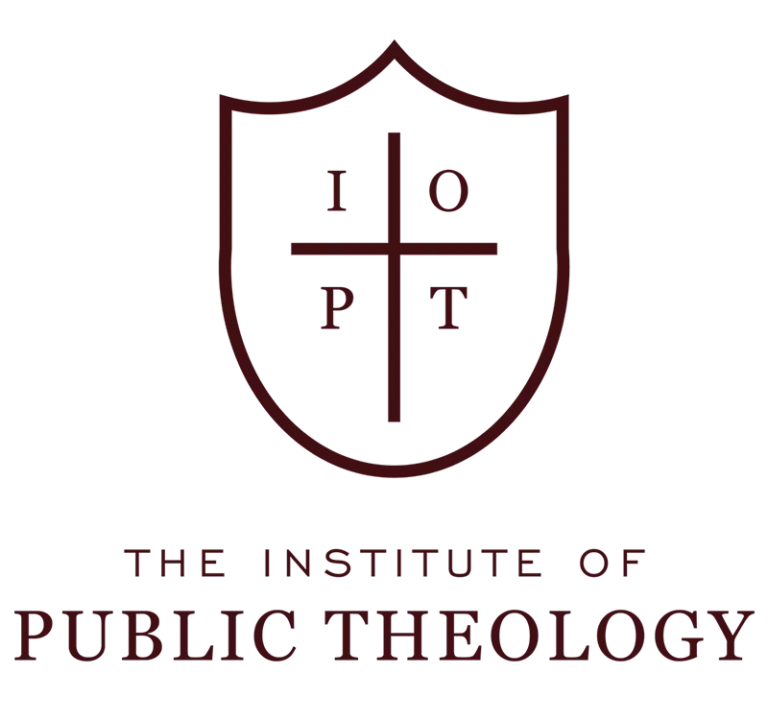The Point: Because of Jesus’ resurrection, nothing can defeat you – not even death.
Christ the Firstfruits: 1 Corinthians 15:20-23.
[20] But in fact Christ has been raised from the dead, the firstfruits of those who have fallen asleep. [21] For as by a man came death, by a man has come also the resurrection of the dead. [22] For as in Adam all die, so also in Christ shall all be made alive. [23] But each in his own order: Christ the firstfruits, then at his coming those who belong to Christ. [ESV]
“In 15:20-28, Paul argues that Jesus is the first to be raised and His resurrection will be followed by others. He introduces the idea of corporate existence and a contrast between Adam and Christ. All humans are included in Adam with respect to sin and death; all Christians are included in Christ with respect to the future resurrection. Christ’s resurrection cannot be viewed in isolation from that of others. Jesus is the representative of others who also will be raised, and the eschatological resurrection is the necessary sequel to Jesus’ resurrection. A chronological order exists between the resurrection of Christ and the eschatological resurrection, and Paul emphasizes that Christ reigns from the time of His resurrection until all enemies are subjugated. The two ‘when’ clauses in 15:24-28 describe what happens at the Lord’s parousia: the kingdom is handed over to God when every ruler, authority, and power has been destroyed. In 15:25, Paul explains why this is so: Christ must reign until He puts all enemies under His feet. This leads to the key statement that death is the last enemy to be eliminated, which demands the resurrection of the dead. He explains why this is so in 15:27: God has put all things, including death, under Christ’s feet. When this last enemy is annihilated, then Christ submits Himself in obedience to God. This unit unveils why Paul so adamantly defends the resurrection of the dead. If there is no resurrection of the dead, then death remains unconquered and still holds sway beyond the end as a power set over against God. This circumstance, obviously, is theologically untenable. Therefore, because God is sovereign and omnipotent, death must be vanquished in the end, which demands the resurrection of the dead.” [Garland, p. 704].
[20-23] “Paul begins the next phase of his argument with a new premise that is true. A resurrection from the dead has already occurred. Christ has been raised from the dead, and Paul identifies Him as the firstfruits of those who have fallen asleep. Firstfruits is a religious term that Jews used for the first sheaf of the grain harvest that was then consecrated to God in the temple. The custom of offering the firstfruits of the harvest was common in the Greco-Roman world as well. Firstfruits of any kind were holy to the gods and were consecrated before the rest could be put to secular use. In the New Testament Paul uses the term to refer to the first and representative part [Rom. 8:23; 11:16]. He also uses firstfruits in 1 Corinthians 16:15 and Romans 16:5 to refer to the first converts of a region. The term firstfruits in 15:20 does not simply signify Christ’s chronological precedence as the first one raised from the dead, however. It conveys that His resurrection is the first of a kind, involving the rest in its character or destiny. That is why Paul says that Christ is the firstfruits of those who have fallen asleep, not ‘of the resurrected’. His resurrection was not simply God’s miraculous intervention that rescued Him from death, but was the beginning of God’s renewal of all things. The concept of firstfruits expects that the rest must follow. As the firstfruits, Christ’s resurrection is a pledge of the full harvest of resurrection to come. The resurrection bodies of the redeemed are to correspond to and flow from Christ’s in the same way that the harvest corresponds to and flows from its first fruits. The imagery expresses that the resurrection of Jesus and the resurrection of believers are integrally related and that they are two decisive moments comprising the total event of the resurrection. Paul now explains in 15:21-22 how Christ’s resurrection was not merely an isolated occurrence but one that has consequences for others who follow by comparing it to Adam’s sin. He presents the comparison through a double parallelism. Paul is not interested in making the point that Adam’s sin brought death [see Rom. 5:12-21 where he makes this point], but in showing how Adam’s sin had a universal effect on all who came after. The same applies to Christ’s resurrection. As physical death came inevitably from Adam’s sin, so physical resurrection comes inevitably from Christ’s resurrection. He underscores the incarnation with the phrase by a man. This detail prevents anyone from arguing that Christ was some divine figure whom death could not really touch. It also foils the argument that His resurrection was of a different order because He was divine. Christ’s death was the death of a man, and His resurrection was the resurrection of a man [cf. Heb. 2:14-15]. The analogy assumes human solidarity with those at the beginning of a line who then become the representatives of those who follow. Adam leads the way and represents the old order; Christ leads the way and represents the new order. Paul assumes that the representative determines the fate of the group. All those bound to Adam share his banishment from Eden, his alienation, and his fate of death so that death becomes the common lot of his posterity. All those bound to Christ receive reconciliation and will share His resurrection and heavenly blessings. Not all humans are in Christ, however. Since only Christians are united with Christ, only Christians will be made alive through Christ. The first all refers to those related to Adam; the second all refers only to those related to Christ, which does not include all humans. Christ’s death and resurrection will finally drive sin and death from the field at the very end, but the effects of these salvific events benefit only those who believe in Him and become in Him a new humanity. Only those who are so united with Christ such that they die with Him [Rom. 6:8] will be those who also rise with Him. In these verses, Paul speaks only about the Christian dead, not about a general resurrection, and the phrase all be made alive refers only to those who have fallen asleep in Christ. Paul affirms throughout the letter that those who are not in Christ ultimately will perish [1 Cor. 1:18; 3:17; 5:13; 6:9-10; 9:27]. Death’s power is broken, however, for those who are in Christ. The verb made alive implies a new creation, and Paul applies the verb only to believers, not unbelievers. He uses the term here for those who will be made alive to enter into eternal life- namely, Christians. The imagery of firstfruits in verse 23 implies that Christ’s resurrection sets in motion a series of events that will culminate at His parousia. Paul is not answering the question ‘Why is the resurrection in the future and not now’, but he does affirm that it lies in the future. He describes a divinely ordained chronology of events related to the resurrection but makes no attempt to elaborate on all that will happen. Paul’s main argument is this: The resurrection of the dead follows a certain sequence (each in his own order): first, Christ is raised as the firstfruits; then, at His parousia, all those who belong to Christ will be raised; and then comes the end. The noun order refers to something placed in its proper rank or order. The picture here is similar to the image of firstfruits and harvest. The sequence of the resurrection occurs according to the rank: first, the resurrection of Christ as the one who ranks highest; then, the resurrection of the host who belong to Christ. This picture best fits Paul’s conviction that Jesus’ resurrection inaugurates the eschatological resurrection, which has two stages and two categories: Christ, who already has been raised, and those who belong to Christ, who will be raised at His parousia (his coming). The term parousia means ‘to be present’ or ‘to become present’. It was used in this latter sense for the arrival of a potentate in a formal visit to a place as well as for the epiphany of a deity. As inhabitants of a Roman colony, the Corinthians would have been fully aware of the pomp and circumstance associated with imperial visits in which sovereigns were honored as gods. Paul subverts imperial ideology by applying this term to Christ’s glorious arrival at the end.” [Garland, pp. 705-709].
Death: the Last Enemy Destroyed: 1 Corinthians 15:24-28.
[24] Then comes the end, when he delivers the kingdom to God the Father after destroying every rule and every authority and power. [25] For he must reign until he has put all his enemies under his feet. [26] The last enemy to be destroyed is death. [27] For "God has put all things in subjection under his feet." But when it says, "all things are put in subjection," it is plain that he is excepted who put all things in subjection under him. [28] When all things are subjected to him, then the Son himself will also be subjected to him who put all things in subjection under him, that God may be all in all. [ESV]
[24-28] “Paul has not lost the focus of his argument against those who say that there is no resurrection of the dead. He is arguing that the final events marking the end, with the final defeat of all other dominions, including death [15:54-55], are all integrally linked to the resurrection of Christ and the resurrection of the dead. The significance of Christ’s resurrection from the dead extends not only to the resurrection of those belonging to Christ, but also to the destruction of every ruler, authority, and power, and to the final enemy, death. Christ’s parousia and the resurrection whistle the close of world history: then comes the end. Every rule and every authority and power could refer to cosmological powers or earthly rulers. These enemies and archenemies of God all take the side of death, the last and greatest of the opponents to be defeated. They all challenge the lordship of Christ and must be overcome. The verb translated destroying means ‘to render ineffective’. It may be better to translate the verb here as ‘dethrone’, ‘abolish’, or ‘overthrow’, rather than destroying. Paul does not precisely lay out when Christ will make these powers impotent. Presumably, the dethronement of the powers occurs before the handing over of the kingdom. The handing over the kingdom occurs after the destruction of every rule, authority, and power. Paul’s only intent is to show that Christ’s resurrection will culminate in the dethronement of all the malignant powers. Faith in Christ’s resurrection embraces the conviction that the oppressors will not ultimately triumph over their victims. The victory belongs to the God who raises the dead. Paul has no interest, however, in delineating any end-time battles. Christ reigns from the time of His resurrection until He subjugates every enemy at the end. Paul draws the imagery of every enemy being set under his feet from the concluding words of Psalm 110:1. Psalm 110:1 is not cited exactly in verse 25, but Paul appears to paraphrase and adapt it to his context. The context suggests that the subject is Christ. Beginning in 15:23, Christ is the referent: his coming, he delivers the kingdom, he is doing the destroying, he must reign. This subjection of the enemies also explains why it is necessary for Christ to continue to reign. He does not reign passively from afar, having completed His assignment, but remains actively engaged in vanquishing all the powers hostile to God until the end, when they are all finally subdued. To be sure, although it is Jesus who actually destroys every rule, authority, and power, it is God who acts through Jesus. It is impossible for Paul to think of Christ’s acting independently of God, or of God’s acting independently of Christ, or of one doing all the work while the other does nothing. Verse 26 stands out from its surrounding context. By separating it and drawing special attention to it, emphasis is placed on the fact that the reign of Christ is not complete until death is conquered; everything is still in process. The last enemy is vividly represented by the psalmist as the cords of death encompassed me … assailed me … entangled me … confronted me [Ps. 18:4-5]. Fear of it cause anguish and distress [Ps. 116:3]. Paul personifies death as a cosmic power which entered into the world through Adam and reigns over everyone. The verb destroyed is repeated from verse 24. The present tense is the present of certainty. This certainty explains why Paul assumes that not even death can separate believers from God’s love [Rom. 8:38-39] and that the Christian dead belong to Christ [Rom. 14:7-9]. Death’s eradication serves as a metaphor for the resurrection of the dead. Death will be rendered impotent by the very raising of the dead. The process began with Jesus’ resurrection; it will be completed with the resurrection of Christians at the end. Robbed of its victims, death’s threatening menace is neutralized. Paul’s purpose here is not to describe the end-time events but to explain the logical and salvific necessity of the resurrection of the dead. The relevance of this point to this larger argument is this: if there is no resurrection of the dead, then death will still hold sway beyond the end as a power set over against God. Verses 24-28 are not intended to reveal why the resurrection has not yet taken place but to make clear that if the dead are not raised, then death remains unconquered. In 15:27, Paul explains why death is to be conquered: God has subjected all things under His feet. The subject from 15:25, he has put, shifts from Christ to God, God has put, because Paul understands God to be the one who raised the dead. Therefore, God is the one who defeats this last foe by subjecting all things to Christ. Paul wishes to avert any mistaken impression that somehow God becomes subject to Christ or that Christ’s reign infringes on God’s absolute sovereignty. All things have been placed in subjection to Christ, but that does not include God. It refers only to creation and the hostile powers that have provoked and abetted creation’s fall, not to the Creator. The ultimate power belongs to God at the beginning and at the end. Paul sums up his argument in 15:28. The powers had rebelled against God; the Son subjects Himself to God in obedience. The Son’s subjection to God does not imply inferiority of His person; but rather the subjection of His will to God’s will. Calvin comments, “Of course we acknowledge that God is the Ruler, but His rule is actualized in the man Christ. But Christ will then hand back the Kingdom which He has received, so that we may cleave completely to God.” The affirmation God may be all in all refers to the unchallenged reign of God alone, not some metaphysical absorption. It applies to the pacification and redemption of the created order and is similar to saying that God is over all [Rom. 9:5]. It affirms God’s undivided and total power over the enemies. All things constitute the totality of the world experienced by human beings. It means that humans will no longer be subject to the destructive forces of the powers. Therefore, whoever denies the resurrection of the dead basically denies God’s power over death and that God will reign over all things unchallenged.” [Garland, pp. 709-714].
Questions for Discussion:
1. What did the term firstfruits mean to the Jews? How does Paul use the term in these verses? What assurance do believers receive from the fact that Christ is the firstfruits?
2. What does Paul mean by the terms in Adam … in Christ? What is true of us because we are in Adam? What is true of all those who are in Christ? Note how Paul’s use of the term all in 15:22 is defined by the representative. In Adam, all refers to all of humanity; while, in Christ, all refers to those who belong to Christ [23]. See Romans 5:12-21 where Paul explains the two representatives in more detail.
3. As we celebrate the resurrection of Jesus on this Easter Sunday, reflect upon all that the resurrection means to you, both in the present, and when Christ returns. How does the certainty of the resurrection enable you to live a Christ-centered life now [see 1 Cor. 15:58]?
References:
1 Corinthians, David Garland, BENT, Baker.
1 Corinthians, Peter Naylor, Evangelical Press.
The Message of 1 Corinthians, David Prior, Inter Varsity.


























